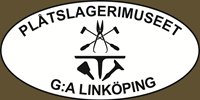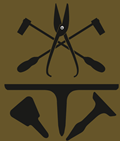The plater´s trade goes back to ancient times, and originally it comes from the armour makers who made the armour of the kings and the noblemen. When this equipment no longer could protect its wearers from injuries, the armour makers had to find new sources of livelihood. On January 5, 1607 the town of Arboga received its charter from King Karl IX, and the first platers´ trade-guild was founded. The first regulation intended for Linköping´s armour makers and platers was made out on May, 1665, and it was written both in Geman and Swedish, as there were at that time many German tradesmen in Sweden. There are stories about disputes between armour makers, platers, copper and brass smiths, lead and copper coverers etc. The coppersmiths early went their own way and have not had much to do with the plater´s trade, and the predecessors of the present plater were those who were to work with what was earlier divided into several trades. From the beginning all thin sheet was called sheet metal and it existed in two variants, the "black" and the "white", which was covered whith tin, and was adapted for both household utensils and e.g. roof covering. Throug the industrialisation the tinners´ possibilities of carrying on their trade came to end, and those who remained were the platers. When the galvanised sheet metal came, it was this that was mainly used. For "finer" buildings sheet copper was used.
The first plater mentioned in the town documents is Erik Fernström, resident in S:t Lars area No. 38, who on March 27, 1765 took the citizen oath. In the workshop which has here been recreated on the initiative of the Central Swedish Platers Association, The swedish Tinners´ and Platers´ Association distrikt 4 and the Open-air Museum of Gamla Linköping, most of the machines and tools come from Bernhard Lindgren´s sheet metal workshop in Bengtsfors, whose son Gösta Lindgren has given these to the museum. Most machines are 50-60 years old, but they are still quite usable. The workshop area is according to information received roughly as big as Lindgren´s workshop, but the placing of the equipment connot for obvious reasons be exactly the same. The purpose of the museum and workshop is to show how a trade was carried on inthe old days, and to try to show, through the manufacture as per old models, part of the trade skill of our predecessors. For those who are interested some of the products are for sale. |

